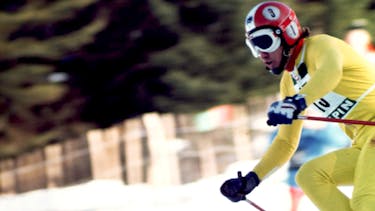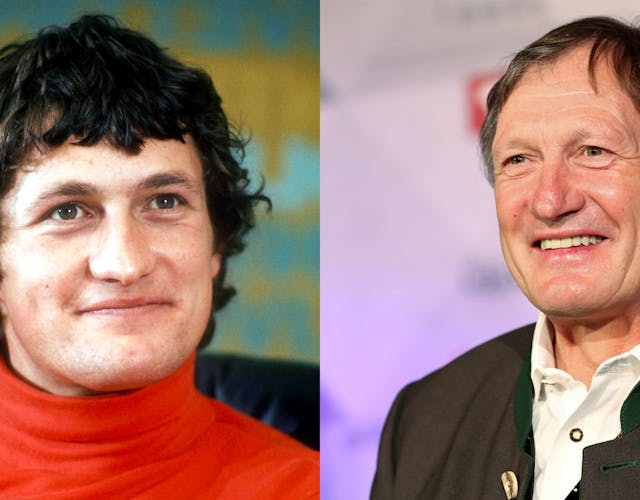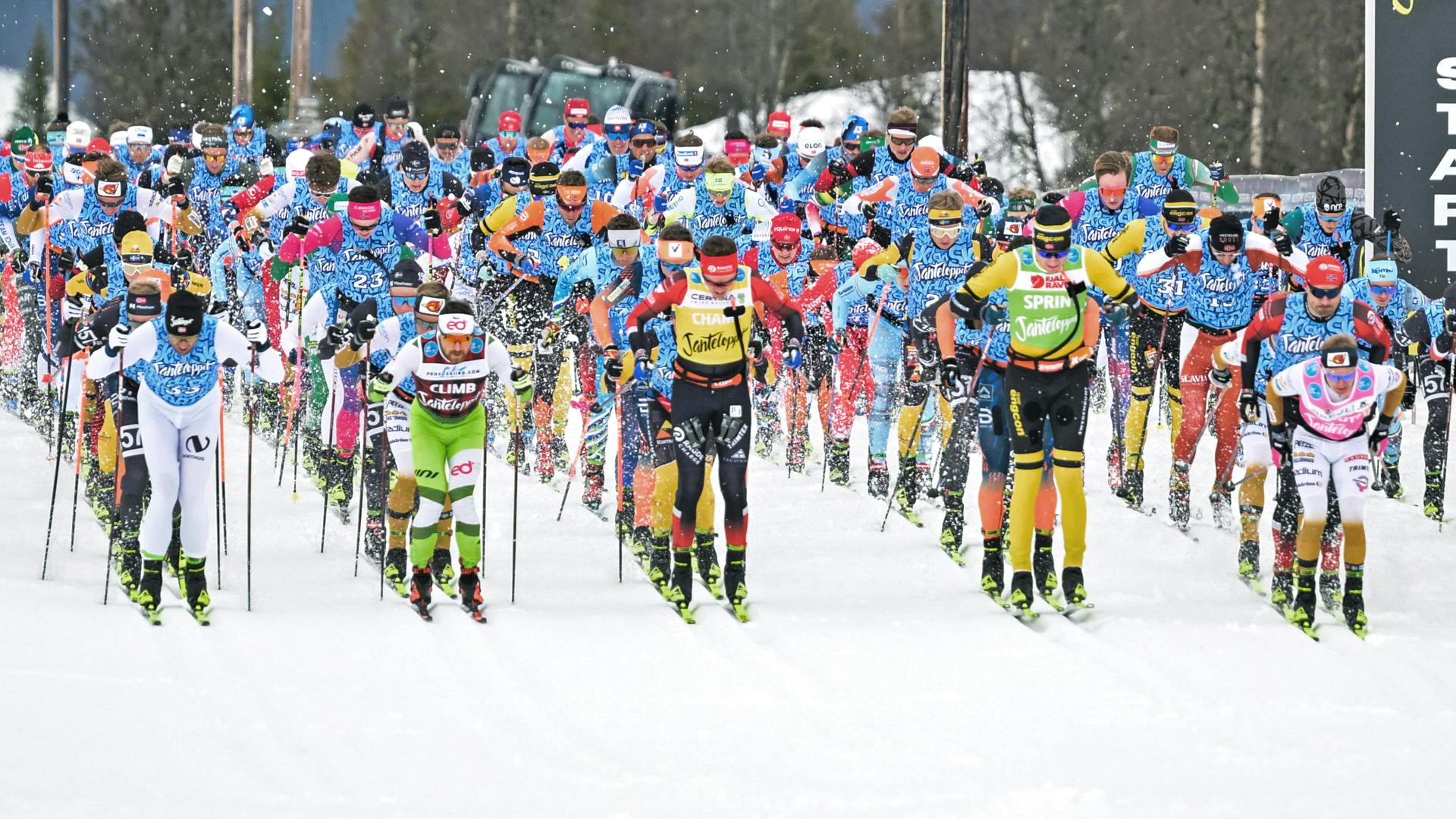„EARLIER WE WERE CONFRONTED WITH FIVE DIFFERENT SORTS OF SNOW IN A SINGLE RACE.”
His victory in the downhill at the 1976 Olympics in Innsbruck makes Franz Klammer the Austrian kaiser of skiing. Fischer’s legendary C4 ski is as closely associated with Klammer as the famous Hole Ski on which the downhill hero clocks up more major successes after Innsbruck. “Fischer was very innovative and certainly made the best ski. Fischer was the be-all and end-all,” Franz Klammer is certain. “It was a wonderful time with Fischer. The entire situation was something special.”
You had great successes on Fischer skis, including your legendary victory at the 1976 Olympic Games in Innsbruck. What do you remember about that race?
I was in good shape, I’d slept well. Everything was just as it should be. Only my starting number, 15, was disappointing – I’d have preferred a lower number. During training, as the skier at the head of the world ranking list, I’d always had the number 1. All of a sudden I now had bumps in the piste that I’d never had before, starting with 1. At the very first right-hand turn there was a shock, and I went off to the fence with my inside ski. So it didn’t start well. Then I skied straighter, aware that I had to do something. I changed my course. Then the last part was pretty well the best performance I ever put up. After me there weren’t many left up above who could upset the rankings. At the finish l was greatly relieved, because I myself expected to win. The sense of relief was much stronger than any rejoicing.
„I HAD NO OBJECTION TO THE HOLE SKI, BUT i HAD PREVIOUSLY WON A LOT OF RACES WITH THE OTHER SKI. WHY CHANGE ANYTHING?”
In the Olympic downhill you did without the new Hole Ski. Why did you decide that way then?
The day before the downhill race we had an argument about that. I had no objection to the Hole Ski, but I had previously won a lot of races with the other ski. Why change anything? That’s why I decided not to change, and in my view that was the right decision. Subsequently we gradually began with the Hole Ski. The skis ran very well, and we were pretty successful with them.
Does the ski that won in 1976 still exist?
No, and I have no idea where it got to.
What significance did Fischer have in your career?
I was in the squad then. Fischer gave me skis, which other companies didn’t do. Fischer was the be-all and end-all. Fischer had various different structures and bases – a great step forward. Before Fischer came along no one had had any idea of such things. Fischer was very innovative, and certainly made the best ski in those days. They were the first to distinguish between cold and warm snow. Fischer was a pioneer. That was the ski you had to have. It was a wonderful time with Fischer. The entire situation was something special.
Initially gliding was not your strong point. Do you recall how people at Fischer tried to turn you into a good glider?
I was never top-rate at gliding; but I did improve a lot. All those ski tests at Fischer helped me a great deal. We even did some tests with little lamps on the skis. That’s how I became a fairly good glider. Of course all those tests were bothersome, too, but you gain a lot if you know how you can let the ski run.
What was your parents’ significance for your career?
My parents were very important for me. Even though we had no money, they did everything to enable me to ski. They gave me absolutely everything they possessed.
When you look back on your long career with Fischer – what were the highlights for you, apart from the Olympic gold medal?
The first victory was something special, of course. And the way I won in Kitzbühel three times running. Every win is important – but Schladming, Kitzbühel and Wengen were highlights.
How has competitive skiing changed over the last forty years? The most far-reaching changes have been in piste preparation. Today it’s artificial snow from start to finish. Earlier we were confronted with five different sorts of snow in a single race, so you had to improvise a great deal. With today’s material the speed in the turns is extreme. At that stage we had already tested skis with sidecut at Fischer, but the skis were still too stiff, which made them unusable. Today skiers are more athletic. An awful lot has happened to boots, too. Earlier on we were still skiing with leather gaiters.
Do you enjoy thinking back to your days as a competitive skier?
It was the nicest thing you can possibly do. What can be nicer for a youngster than sport – and then doing well at it? Comradeship with the others in your own team, but also with skiers from other countries. Seeing foreign parts and travelling, taking part in races. I’d still be doing it today if I only could. It was a real challenge and absolutely great. I’m still frequently in touch with Werner Grissmann, Bernhard Russi, Leonhard Stock, with any number of onetime competitive skiers.
Are you still involved in competitive skiing today?
I myself no longer have anything to do with competitive skiing. I comment on what goes on and sometimes write about it in print media. If I can find the time, I go and watch in Kitzbühel. When I’m in America, I go and watch in Beaver Creek. Unfortunately I don’t manage much more than that, because I’m pretty busy.
What did you do after your skiing career?
I did a lot of car racing, and now I do advertising for companies and for tourism in Carinthia. I live in Vienna. My children ski, but don’t want to race. That doesn’t bother me. If they don’t want to, that’s fine by me.





